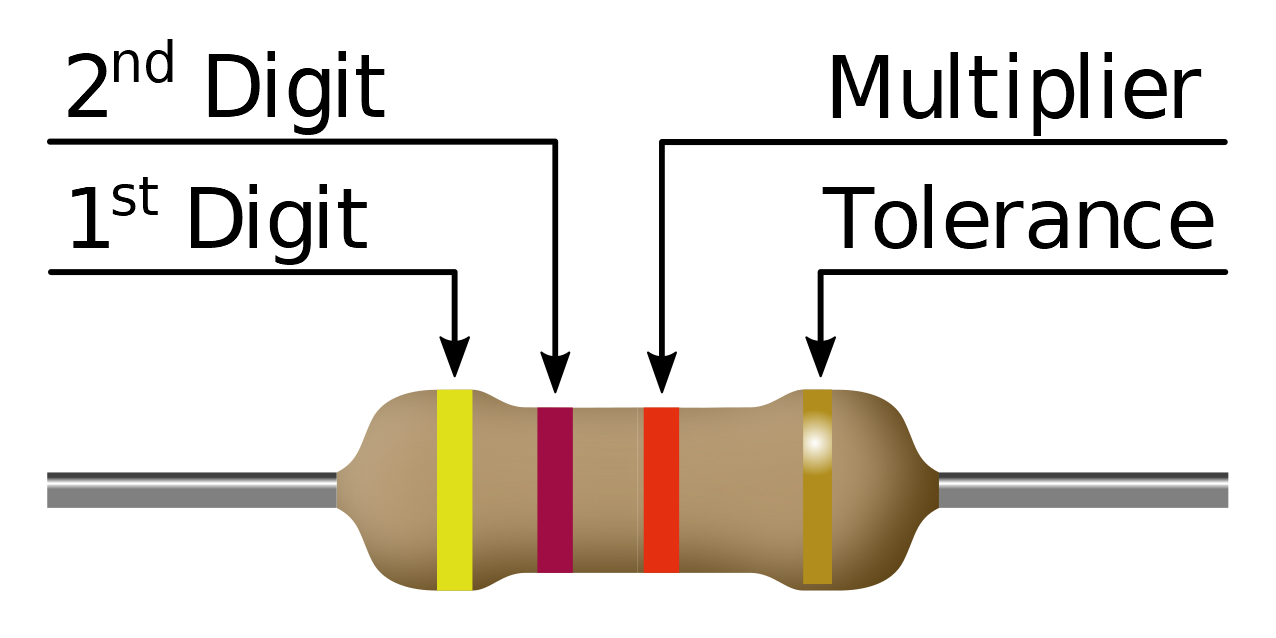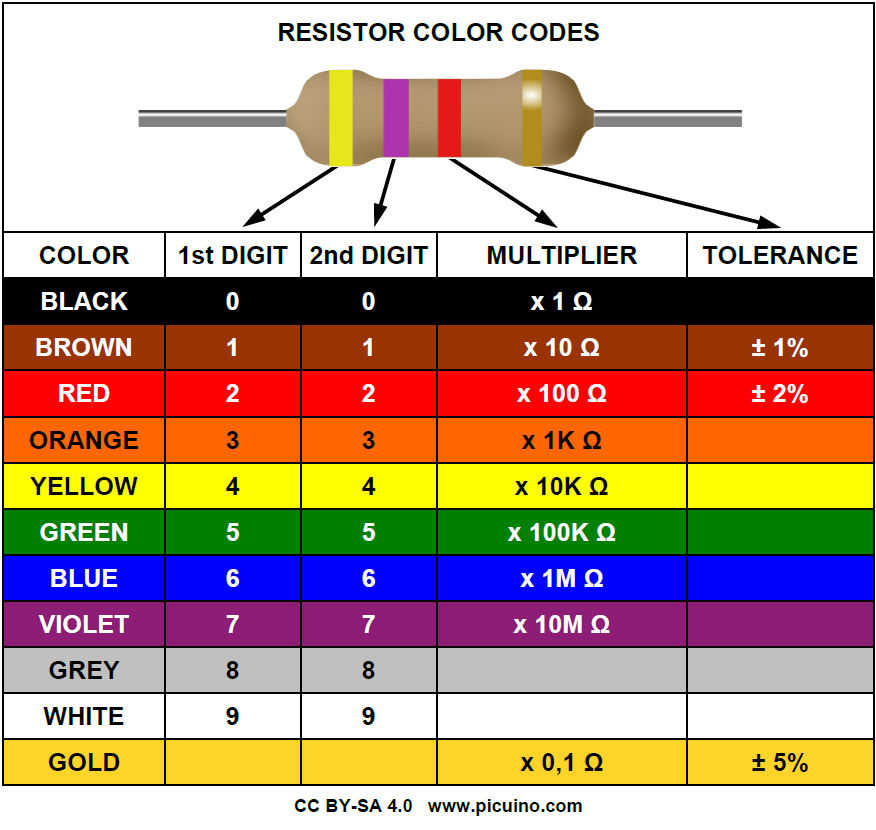1. Resistor color coding¶
The resistor color code is used to express the value of a resistor in ohms (Ω) and its tolerance, through several colored bands printed on the body of the resistor, which can be seen from any position.
Resistance notation is similar to scientific notation, with a two-digit mantissa and a one-digit exponent.
The following document has exercises to translate all the color codes of the commercial E6 series resistors. Half of the exercises consist of translating colored bands into ohm values and the other half consists of translating the resistor value in ohms into colored bands. In all exercises, a tolerance of 5% has been used as it is the most common.
Color code table¶
International system prefixes:
- µ = micro = 0.000 001
- m = milli = 0.001
- k = kilo = 1,000
- M = Mega = 1,000,000
Translate colors to numerical value¶
To translate color code into numerical value we will follow the following steps:
Place the resistor in the correct position so that the tolerance color band is on the right.
Most of the time the resistance tolerance is 5% and the band is gold in color, easily distinguishable.
The resistance would remain with the bands
Yellow Violet Orange Gold
Translate the first two color bands into numbers. In the case of the example resistor the colors are yellow and violet.
Yellow = 4
Violet = 7
So the first number is 47
Translate the third color band to a multiplier
Orange band = 3 zeros = multiplier x 1000
Multiply the first number by the multiplier to calculate the final value.
47 x 1000 = 47000 Ohms
Use suffixes to simplify very large values.
47000 Ohms = 47k Ohms
Special cases¶
When the second band is a zero, it must be taken into account that it is added to the zeros of the multiplier.
For example, a resistor with the following colors.
Brown Black Red Gold
It translates as 10 with a multiplier of 100 which turns out to be 1000 Ohms or 1k Ohm.
When the multiplier is Gold, instead of multiplying it must be divided by 10.
For example, a resistor with the following colors.
Green Blue Gold Gold
It translates as 56 with 0.1 multiplier which turns out to be 5.6 Ohms.
Translate numeric value to colors¶
To translate a resistance value into colored bands we will follow the following steps.
Translate the resistance value to ohms without any prefix. For example, for a 3.9k Ohm resistor
3.9k Ohms = 3900 Ohms
Find the first two color bands from the resistance value. For example, for a 3900 Ohm resistor
3 = Orange
9 = White
Calculate the multiplier to add the missing zeros. In the case of the 3900 Ohm resistor.
Multiplier = 100 = Red color (2 zeros)
Add the Gold color tolerance band.
Orange White Red Gold
Special cases¶
When the second band is a zero, it must be taken into account that it is subtracted from the zeros of the multiplier.
For example, a resistor with the value of 100 Ohms.
Brown Black = 10
You need a multiplier x 10 in Brown color
The result is
Brown Black Brown Gold
Tests¶
Multiple choice tests to calculate the value of the resistors from the color code or to calculate the colors from the resistance value.

